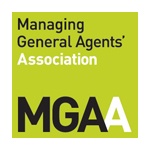- April 26, 2023

The Well-Informed Director
The upsurge in premiums for Director’s and Officer’s (D&O) insurance in 2019 surprised many, particularly in the SME sector. Surely it was just global, US-exposed businesses that had claims? SME firms just bought insurance for a once-in-lifetime event, didn’t they? Not so…claims against directors in all sectors have surged, and when a director is in the firing line, the stakes can be high.
In heavily regulated industries like financial services, a director can be at risk long before the allegation of wrongdoing. An example might be an investigation by the FCA into Consumer Duty legislation compliance. This might start as an investigation against the company, but each board member might need a law firm to advise them when they are required to give evidence to the regulator. And non-FCA-regulated firms are not immune: regulatory investigations such as for breach of Data Protection legislation can affect most firms.
Disgruntled shareholders are another potential group of claimants, including those where companies are closely held. Actions for unfair prejudice alleging misconduct and breach of fiduciary duty against the board can occur, as can claims alleging failure to supervise a fellow board member accused of dishonest or negligent behaviour.
Claims by employees alleging constructive dismissal, unfair redundancy selection or discrimination can be made against directors and claims by contractors/consultants alleging breach of contract after their contract has been discontinued or terminated might involve the board.
In the unfortunate event of insolvency, investigations might be commenced against the board by the Insolvency Service. And even if no action is pursued following the investigation, liquidators themselves might bring an action against the board on behalf of creditors or sell the rights of action to an insolvency litigation finder who then pursues the action.
Why the upswing in D&O claims?
Increased regulations and changes in consumer behaviour have helped fuel the rise in D&O claims. And a director does not need to make a fundamental mistake to find themselves in deep water. The truth is that many D&O claims are settled without finding a serious breach of duty, but by then, the director or their insurer has spent vast amounts on legal fees and wasted heaps of management time. It’s terrible news for the business.
Board directors in the 2020s are far more aware than their predecessors of the accountability that comes with their position, the standards of corporate governance required and the expectations of regulators and stakeholders. That said, specific examples of what happens when stakeholders are unhappy with a director’s performance are difficult to come by as they can be shrouded in secrecy to protect the parties involved. The fact remains that investigations and claims against directors of companies of all shapes and sizes have increased, and so D&O insurance premiums remain significantly higher than they were pre-2019.
How can a company avoid these risks?
The key to staying out of trouble is to have a robust corporate governance framework embedded into company culture with clear and visible evidence. Attention to corporate governance reveals itself in how directors behave and manage their business, but it’s not just about doing the right thing; it’s about being seen to do the right thing. If it isn’t written down, it isn’t done!
The advantages are many and go far beyond risk mitigation. A great corporate governance framework provides a safe place for all directors to make good decisions and can help attract the best non-executives to the firm. This supports development and growth. Beyond that, a robust and transparent corporate governance framework will enhance a company’s attractiveness as a target. Potential buyers want a business primed for success, with clear goals and well-defined roles and responsibilities.
What steps should the board take?
To embed a robust corporate governance framework throughout the business, it is helpful to break down some of the components of operational resilience. As well as incorporating specified regulatory requirements such as a regularly tested risk register framework for FCA firms or dust protection protocols, all companies should consider their business plan and how it is communicated. The board should prepare and document clear business aims and objectives from the start-up stage and beyond over a suitable timeframe. The transparent dissemination of this plan to all stakeholders is the cornerstone of the resilience framework. And it fits not just the ‘what?’ that matters but the ‘how?’.
Everyone should know the business’s ultimate goals, and from here, the roles and responsibilities of executives and non-executives should be defined with clear job profiles. Team objectives should sit alongside individual objectives to promote marching to the same beat. Take the example of an underwriter in an underwriting agency (MGA). They have two distinct ‘bosses’ – the insurer carrier (the principal in the agency relationship) and the manager/board of the MGA (line manager relationship). The underwriter might face situations where the interests of these two bosses are not aligned. What should the underwriter do? An operationally resilient MGA will anticipate such scenarios and have clear behaviour protocols communicated and endorsed via training programmes.
These are just some examples of what is needed and expected in today’s regulated environment. Each firm is unique, and there is no blueprint for all, but solid corporate governance makes a firm powerful, robust and attractive to buyers – it is not just about avoiding the banana skins!
For further guidance and support on operational resilience, please get in touch with GreenKite’s [email protected]





